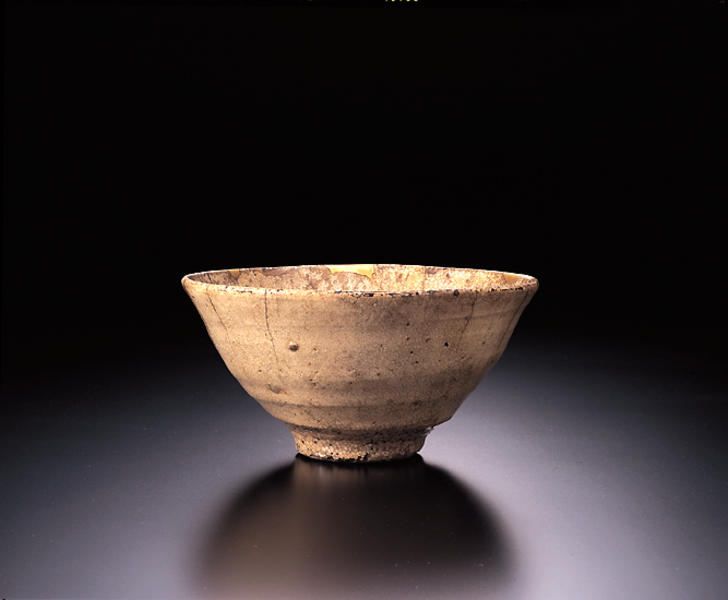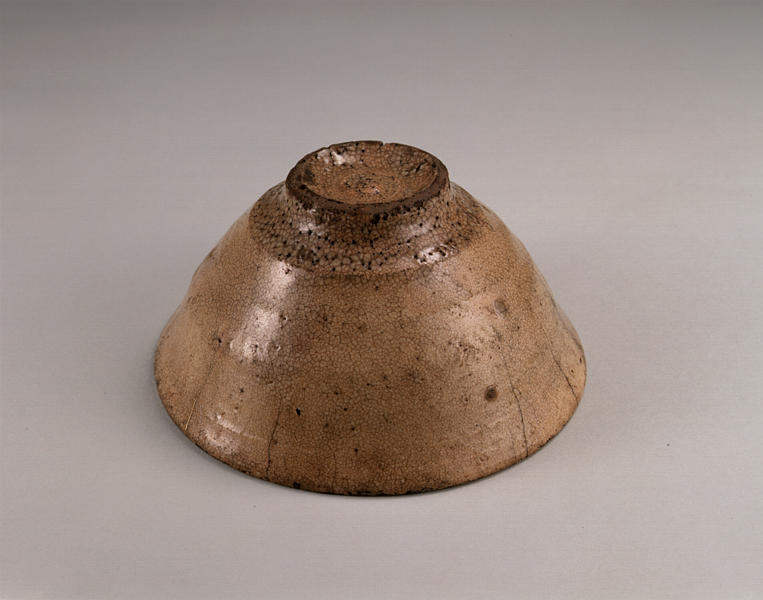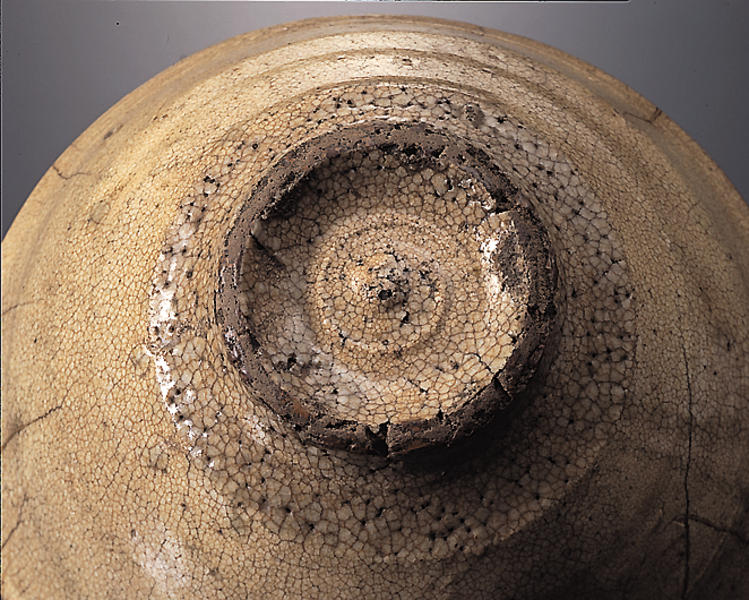Tea Bowl, known as ' KANAMORI'
- Korea
- Korea, Yi dynasty
- 16c
- Korean ware, Ido type
- H-7.4 D-15
- Transmitted by Kanamori Sowa, the Hachisuka clan
Catalogue Entry
Korea, Yi dynasty, 16th century
Korean Ido ware
Height, 7.4cm; mouth diameter, 15.0cm;
foot diameter, 5.2cm
Ido-type tea bowls vary in their handling and are divided on these formal differences into 4 types: O-Ido, Ao-Ido, Ko-Ido, and Ko-kan'nyu. Needless to say, these works were all produced in the same kilns and were all produced in generally the same time frame. The name "Ido jawan" or Ido-shaped tea bowl was already in use by the Tensho era (1573-91) of the Momoyama period, and it seems that the major tea masters and samurai of the day owned these bowls which would eventually be placed in the highest ranks of tea bowls for the wabi style of tea.
While the details of the provenance of the Ido tea bowl known as Kanamori are unknown, it may have been given this name because it was once the property of Kanamori Izumo-no-kami. This bowl has a wide mouth and a relatively shallow interior and thus falls into the Ko-Ido category. The overall handling is, however, expansive and powerful. The center of the broad interior of the bowl has a small reserve for the pooling of the tea, and this detailing gives further interest to this bowl's appearance. 5 rings tracing the potter's actions at the potter's wheel circle this pooling reserve. The foot is low, and the carving within the foot is precise, with a very slight, swirling central tokin foot knob. The glaze is quite well applied and has a fine crackling, and the area around the foot shows fine glaze pulling. These details all provide this bowl with a rich array of interesting visual effects. TA


